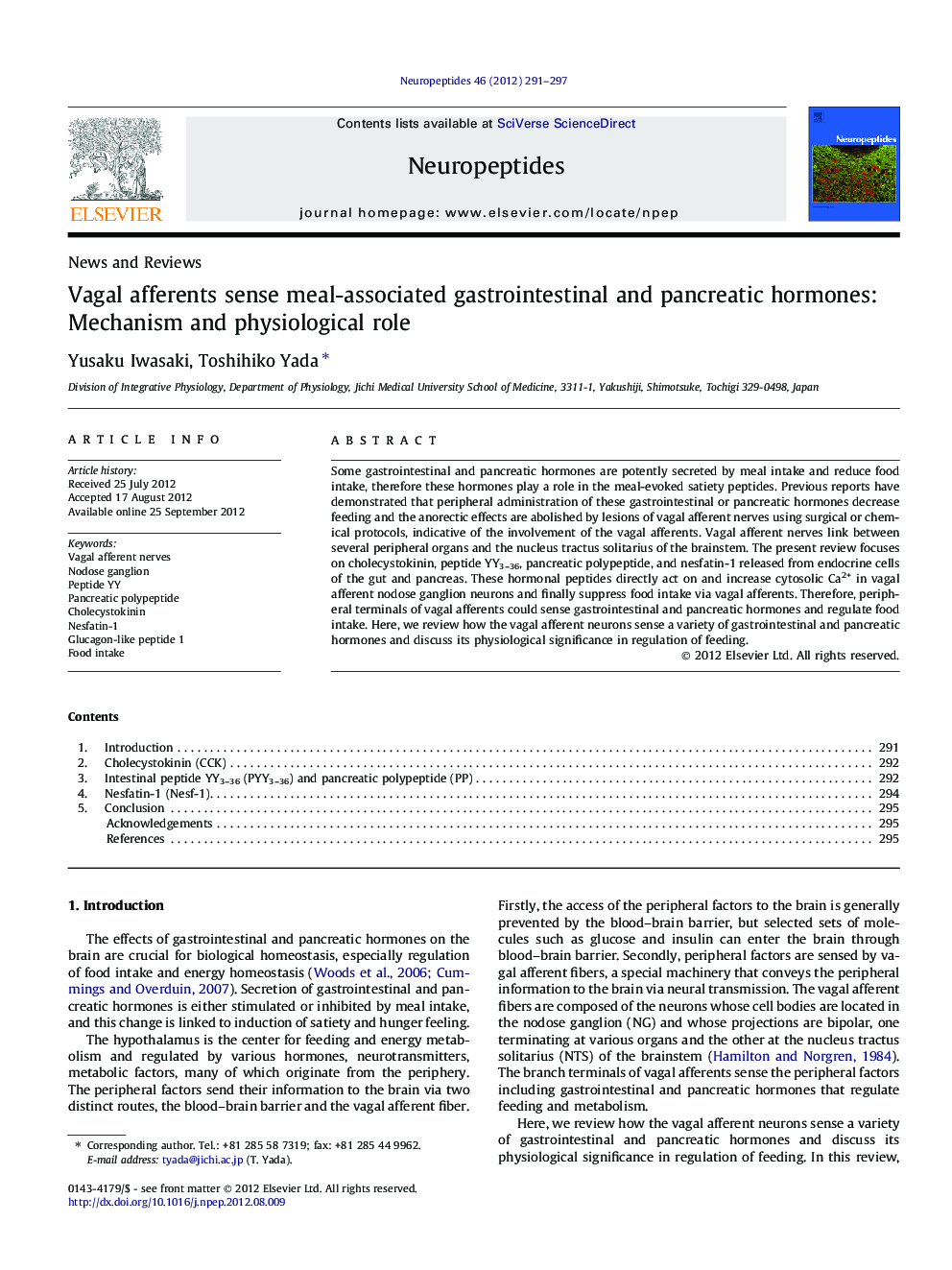| Article ID | Journal | Published Year | Pages | File Type |
|---|---|---|---|---|
| 5904305 | Neuropeptides | 2012 | 7 Pages |
Abstract
Some gastrointestinal and pancreatic hormones are potently secreted by meal intake and reduce food intake, therefore these hormones play a role in the meal-evoked satiety peptides. Previous reports have demonstrated that peripheral administration of these gastrointestinal or pancreatic hormones decrease feeding and the anorectic effects are abolished by lesions of vagal afferent nerves using surgical or chemical protocols, indicative of the involvement of the vagal afferents. Vagal afferent nerves link between several peripheral organs and the nucleus tractus solitarius of the brainstem. The present review focuses on cholecystokinin, peptide YY3-36, pancreatic polypeptide, and nesfatin-1 released from endocrine cells of the gut and pancreas. These hormonal peptides directly act on and increase cytosolic Ca2+ in vagal afferent nodose ganglion neurons and finally suppress food intake via vagal afferents. Therefore, peripheral terminals of vagal afferents could sense gastrointestinal and pancreatic hormones and regulate food intake. Here, we review how the vagal afferent neurons sense a variety of gastrointestinal and pancreatic hormones and discuss its physiological significance in regulation of feeding.
Keywords
Related Topics
Life Sciences
Biochemistry, Genetics and Molecular Biology
Endocrinology
Authors
Yusaku Iwasaki, Toshihiko Yada,
